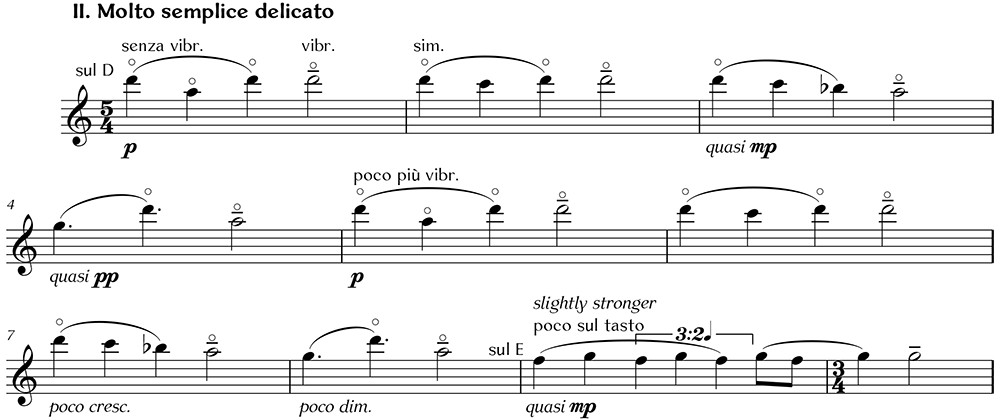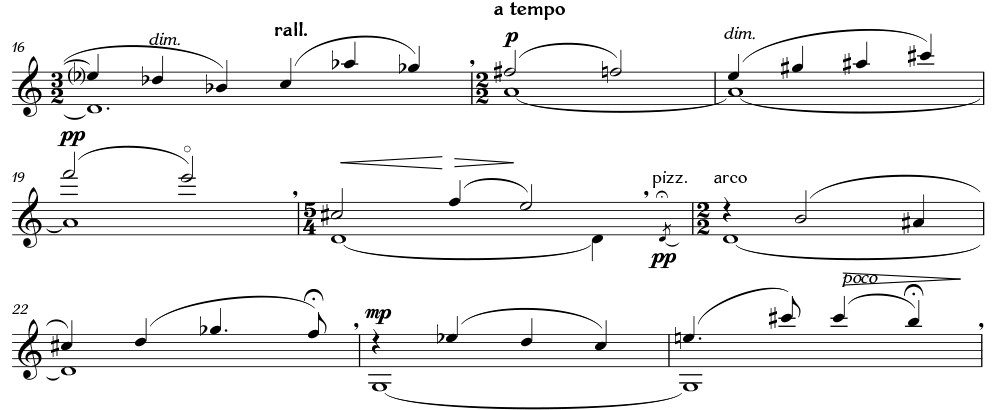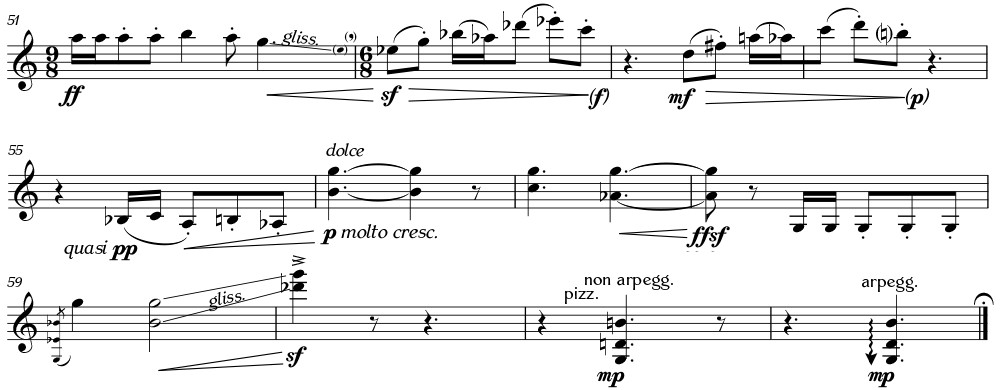My Suite for solo violin was completed on 17 January 1995. It took the form of a 13-minute theme and variations, based on a song called ‘Ich bin der Doktor Eisenbart‘ (which i found in an anthology of German student songs), though the theme appeared at the end rather than the start of the piece, an idea i pinched from Britten’s Lachrymae.
Each of the six variations focused on one aspect of the theme. The first (Andante poco grazioso) played with its rising semiquaver pattern, rendered now as quintuplets and coloured by Messiaen’s second mode of limited transposition (i was steeped in Messiaen at the time). The second (Molto semplice delicato) turned the tune upside down and placed it on high harmonics, in the process becoming slow and delicate. The third (Allegretto scherzando) harnessed the basic rhythm of the tune, turned into a playful dance (sounding a touch similar to another of my obsessions from that time, Shostakovich).

The fourth variation (Meditation. Largo espressivo) took the three main intervals used in the theme – major second, major third and perfect fourth – and, in a ritualised way, one by one distorted them (my original programme note used the word “destroy”!) into their imperfect equivalents. Following the “destruction” of each perfect interval was a short celebratory glissando of harmonics. Towards the end the perfect intervals tried to make a comeback – repeating the opening bar with excessive vibrato in an attempt at emotional weight, but, according to the programme note, “this is immediately killed off, and – as it were – ground into the dust with grotesquely mocking glissandos”. (Bearing in mind what i wrote when killing Meditation No. 3, it’s curious i called this movement ‘Meditation’; perhaps it was to do with a recurring, never-the-same action – making each interval imperfect – rather than recurring material.)

The next two variations were both connected to harmony. The fifth (Moto perpetuo. Presto comodo) ran amok with extremely fast semiquavers, their pitches derived from my own harmonisation of the tune but creating an aurally atonal effect, drowning in a torrent of ostensibly barely connected passing notes. The sixth (Passacaglia. Adagio) drew on the original harmonies of the theme, transposed to D, G and A. These formed the basis of a passacaglia on open strings (D-G-D-A-D), with free-flowing melodies interacting with those pitches, usually above but, towards the end, descending below them.

The last movement (Finale. Allegro risoluto) finally presented the tune of ‘Ich bin der Doktor Eisenbart’, initially quite straight before transformed it into a jig, punctuated with decorative interruptions.
The Suite had a very quiet life. It was written for a violinist friend at music college, who gave the première in May 1995; it got a second performance by a different violinist, also at music college, in March the following year. It was never performed again. As with Meditation No. 3, it seems that all the physical scores, sketches and paperwork associated with the Suite were already destroyed, so all that remained of this darling were just three files comprising the score (Sibelius file and PDF) and programme note, which i have just deleted: the Suite is no more.


Once again, an intricate and interesting-sounding piece.